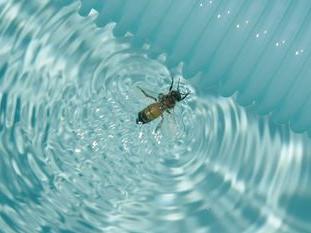
Fashionable bees

Everyone wants to help the bees. Suddenly honey bees are the new chickens: backyard hives are sexy. They’re trendy. Ed Wagner of Mannlake Ltd. says there’s no question about it, sales of beekeeping supplies to new customers are up, and suppliers of package bees have been selling out all over the country. After years of unpopularity, bees, it seems, are becoming fashionable pets.
Trendiness involving animals always sets off cries of alarm from my inner animal-rights activist. I wonder if now that we’ve kindled an interest in bees and beekeeping, could we be in danger of loving the girls to death? Can there be too many hives in an urban area? Will all those extra bees have to compete for a finite amount of nectar and pollen? I know, I know, my concern is not completely altruistic, but will our bees make less honey for us?
I called Kim Flottum, editor of Bee Culture Magazine and the Beekeeper blogger at thedailygreen.com to ask him how many bees could fit in a neighborhood.
He wasn’t worried about them finding enough food. “The carrying capacity of a city can be phenomenal,” he said. “You’ve got parks and roadside plantings. Draw a circle 2 miles around a hive, you’ll find backyards with flowers and weeds.” You’re not likely to run out of forage in most areas.
Kim thinks water—especially in our drought prone Western states—may be more of an issue than lack of forage. “The urban area is all cement. So where will the bees find water? If you’re in the backyard watering, bees will find you.” Swimming pools can be troublesome he said. “The chlorine cloud attracts bees. They love it.”
We all know what it’s like to come nose to proboscis with a floating bee in a swimming pool. And while some cities are changing their zoning codes to allow bees—Denver recently decriminalized keeping bees, and their municipal code declares that domestic honey bees are not “wild or dangerous animals”—bees can and will sting if threatened or scared. And we humans, when we see a bee, tend to flail and shriek and scare the bee.
As more people take on beekeeping in urban areas, the bee-human interface will become the most important issue bees and beekeepers face. I hope we can help the bees can win this one.

